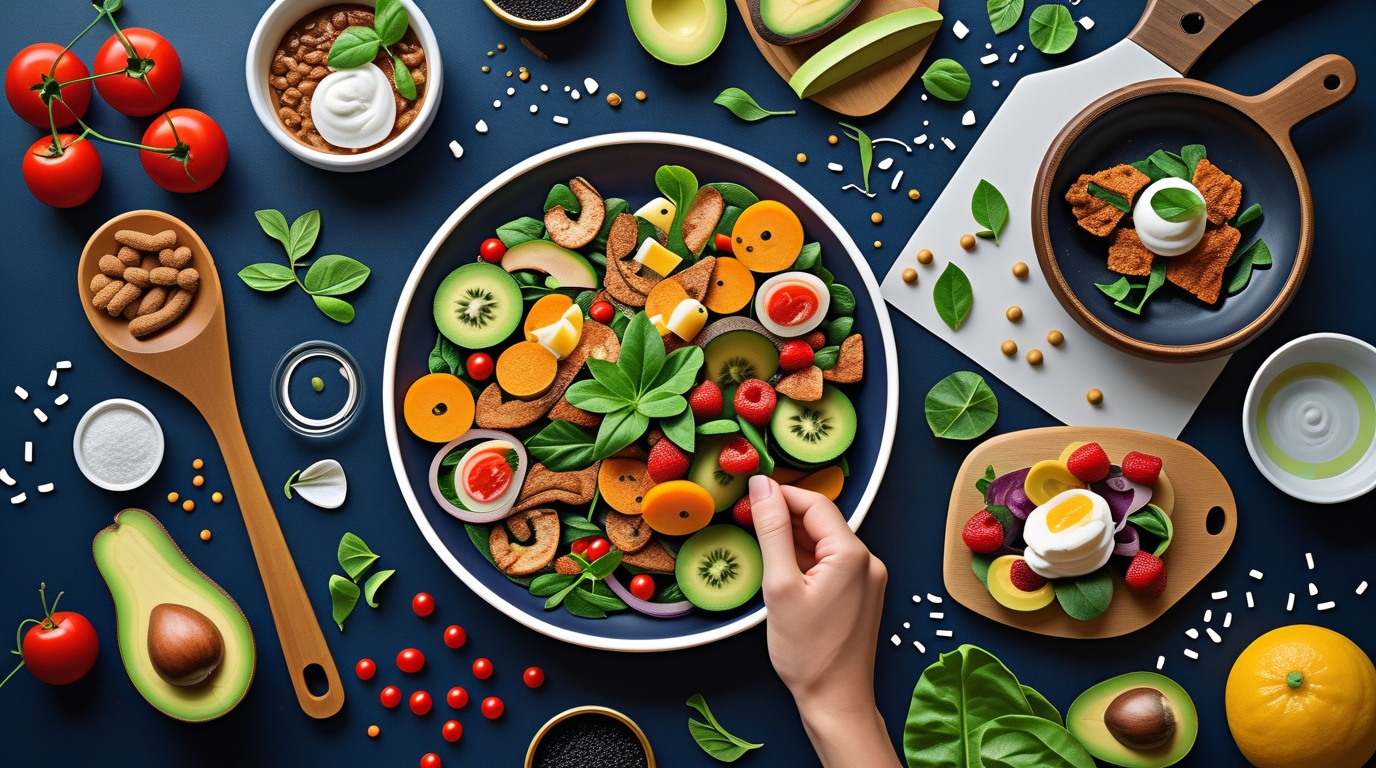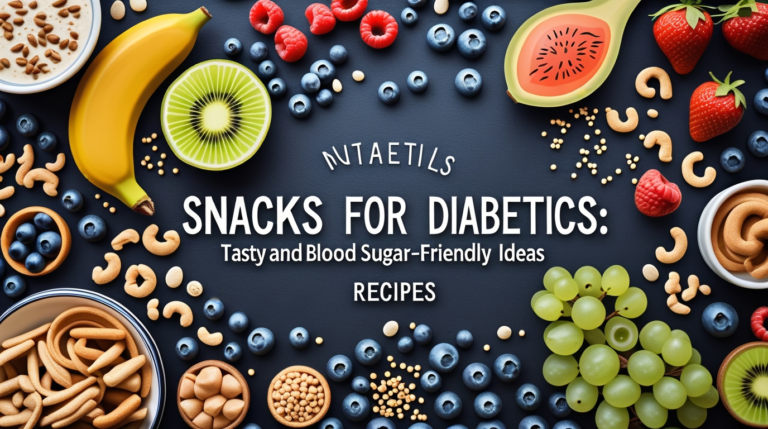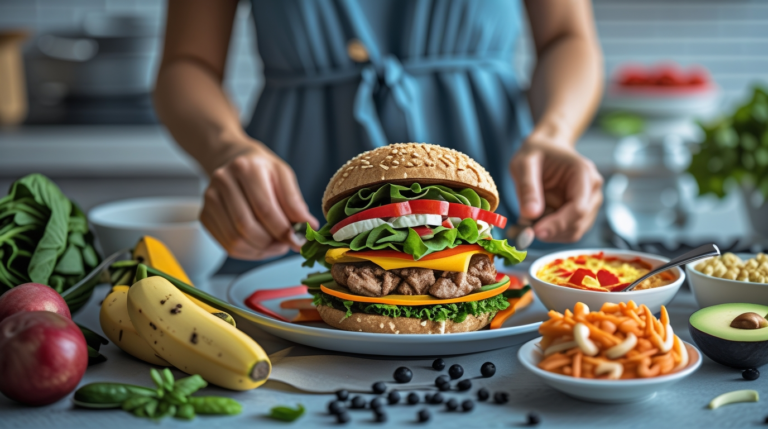In the journey towards achieving weight loss goals, maintaining a calorie deficit is crucial. It’s the practice of consuming fewer calories than your body needs to maintain its current weight, effectively burning more calories than you consume. However, achieving a calorie deficit doesn’t mean you have to sacrifice taste. With the right recipes and meal planning, you can enjoy delicious meals while striving to shed those extra pounds. Welcome to our comprehensive guide on Calorie Deficit Recipes: Tasty Meals to Help You Lose Weight. This post will equip you with practical insights and mouth-watering recipes that make the weight-loss journey enjoyable.
Understanding Calorie Deficit and Its Importance
To create a successful weight loss plan, it’s crucial to understand the fundamentals of a calorie deficit. Essentially, it involves eating fewer calories than your body burns through basic functions and physical activity. This negative energy balance forces your body to utilize stored fat as energy, leading to weight loss.
Why a Calorie Deficit is Key for Weight Loss
There are countless diets and weight-loss strategies, but they all circulate around the core principle of maintaining a calorie deficit. Without this essential balance, sustained weight loss is nearly impossible. Keeping an eye on your calorie intake helps you make informed decisions about your nutrition and overall health.
How to Calculate Your Daily Caloric Needs
Before diving into calorie deficit recipes, it’s essential to determine how many calories you need to maintain your current weight. You can do this using the Basal Metabolic Rate (BMR) calculator and adjusting for activity level using the Total Daily Energy Expenditure (TDEE) formula. These calculations will guide you in setting the right calorie targets for weight loss.
Crafting Delicious Meals That Support a Calorie Deficit
Eating fewer calories doesn’t have to mean missing out on flavor. Here’s how to create meals that are both satisfying and conducive to weight loss.
Selecting the Right Ingredients
- Choose whole, unprocessed foods: Vegetables, lean proteins, and whole grains should form the cornerstone of your meals.
- Opt for nutrient-dense foods: Foods rich in vitamins and minerals but low in calories help keep you full and energized.
- Include healthy fats: Ingredients like avocados, nuts, and olive oil can enhance flavor and contribute to satiety.
Recipe Creation: Techniques for Low-Calorie Cooking
Transforming your favorite dishes into low-calorie masterpieces can be a fun process. Here are a few techniques:
- Portion control: Using portion control techniques ensures that you’re consuming the appropriate amount of calories without overeating.
- Use herbs and spices: These add flavor without adding calories.
- Modify cooking methods: Adopting methods such as grilling, steaming, or baking can reduce the need for high-calorie oils and fats.
Sample Calorie Deficit Recipes
Below are some nutrient-rich recipes that are designed to help you maintain a calorie deficit.
Lean Protein Packed Breakfast: Quinoa Egg Scramble
This breakfast is perfect for those looking to start their day with a protein-packed meal.
- Ingredients: Eggs, cooked quinoa, spinach, tomatoes, and feta cheese.
- Method: Scramble all ingredients over medium heat, season with salt and pepper for taste.
- Calories: Approx. 300 per serving.
Midday Energizer: Chickpea Salad
This simple yet flavorful salad is perfect for lunch and packed with nutrients.
- Ingredients: Chickpeas, cucumbers, cherry tomatoes, red onion, parsley, lemon juice, and olive oil.
- Method: Mix all ingredients well, season with salt and pepper to taste
- Calories: Approx. 250 per serving.
Staying Committed to a Calorie Deficit Plan
Adopting a calorie deficit diet is more than just following recipes; it involves a lifestyle change.
Monitoring Your Progress
It’s important to track your meals and adjust as necessary. Utilize mobile apps or food journals to monitor your daily calorie intake and ensure that you’re staying on target. Regularly updating these records keeps you accountable to your goals.
Overcoming Common Challenges
Common challenges include experiencing hunger and cravings, but these can be managed through strategic planning. Ensure you have healthy snacks on hand and prioritize protein and fiber-rich foods to prolong satiety.
For more information on maintaining healthy nutrition habits, check out our post on Healthy Eating Tips for Busy People and gain insight into balancing life and nutrition.
Conclusion
Creating meals that maintain a calorie deficit doesn’t have to be complicated or bland. With careful planning and creativity, you can prepare delicious, satisfying meals that support your weight loss aspirations. Browse through our other post, Meal Prepping for Weight Loss: A Beginner’s Guide, for more tips on effective meal planning. Remember, patience and consistency are the key to long-lasting weight loss success. We invite you to share your favorite calorie-deficit recipes or experiences in the comments below, as we continue this journey towards a healthier lifestyle.
Incorporating a variety of tasty, low-calorie recipes into your diet is a great way to ensure you’re enjoying your meals while staying on track with your health and fitness goals. We hope this guide inspires you to experiment with flavors and ingredients while keeping an eye on your calorie intake. If you find this post helpful, please subscribe to our newsletter for regular updates on nutrition and healthy recipes!





Leave a Comment